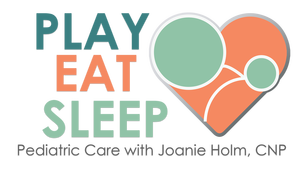|
Prairie Doc Perspective for the Week of May 28th, 2023
“Big Pharma has gone fishing” By Andrew Ellsworth, MD You are probably familiar with drug commercials. There are all sorts of them showing people being active and smiling as they attend a birthday party, go biking, go surfing, or shopping at a flower shop. At some point they start listing some of the side effects and precautions, including some obvious and some scary statements. “Do not take this medication if you take nitrates for chest pain, do not take this medication if you do not suffer from a disease, or do not take his medication if you are allergic to this medication. Stop taking this medication if you experience headache, dizziness, sudden death, or body odor.” If you think there are more of these commercials now than there used to be, you are correct. In 1997, the FDA relaxed some of the requirements such as listing all possible side effects, as long as they provide a phone number or website to obtain that information. Thus, direct to consumer advertisements have been on the rise ever since. Now, instead of focusing on the education of physicians and other prescribers, the drug companies have greatly increased their budgets on advertising and lobbying. Often they spend more on advertisements than they do on research and development, let alone the actual product. The research behind how these companies share this information is fascinating. For instance, they know it helps to “water down” bad side effects, such as stroke, with minor side effects, such as body odor. If the list of side effects ends with sudden death, it sounds worse than if it ends with flatulence, so they invest heavily in the research and psychology behind every word in the commercial. The benefits of direct to consumer advertisements may include increasing public awareness of diseases and treatments, empowering patients to know more about their options. However, these advertisements can lead to increased prescriptions of unnecessary medications, expensive medications, or the preference for an expensive medication over a cheaper one that may be comparable or better. This in turn increases healthcare costs. Meanwhile, the high costs of these advertisements also end up being passed along to people in rising drug prices. Given these concerns, New Zealand and the United States are the only two industrialized nations which allow for direct to consumer marketing by the pharmaceutical industry. The goal of the weekly Prairie Doc Perspective and the Healing Words Foundation are to enhance health and diminish suffering by communicating useful information, based on honest science, provided in a respectful and compassionate manner. We do not accept any money from the pharmaceutical industry. When hearing about drugs, diets, supplements, or other health information, please consider the source, and talk to your doctor about the risks, benefits, and alternatives. Prairie Doc Perspective Week of May 21st, 2023
“No Zero Days” By Mark D. List, MD Is there something about your health you’d like to change? For most Americans, this question usually triggers a wide range of responses. In my practice, most responses usually center on wanting to lose weight, being more consistent with their exercise routine, or finally stopping smoking, drinking or vaping. What do these 3 lifestyle changes have in common? They are really, really hard to do. Behavioral modification of daily habits and routines is a very difficult process: humans tend to get stuck in our daily ruts and stay in that groove day after day. The mental and physical energy required to change our diet or exercise on a daily basis often feels overwhelming. So, I’d like to introduce you to a new mindset for you to try if you are one of the millions of Americans looking to change something about their health and lifestyle: No Zero Days. Now this is not my invention, but rather has made the rounds on the internet for quite some time, originating from a motivational response by a user from the website, Reddit. The premise is simple:
No Zero Days. Mark D. List, MD is a Family Medicine Doctor and currently practices at Avera Medical Group 69th & Cliff in Sioux Falls, South Dakota. Follow The Prairie Doc® at www.prairiedoc.org and on Facebook featuring On Call with the Prairie Doc®, a medical Q&A show providing health information based on science, built on trust, streaming live on Facebook most Thursdays at 7 p.m. central. Prairie Doc Perspective Week of May 14th, 2023
“The Gift of Kidney Donation” By Jill Kruse, DO The first successful organ transplant was a kidney transplant in 1954. The donor was the identical twin of the recipient. The new kidney worked for 11 months. This was long before any anti-rejection medications were available. Cyclosporine, the first anti-rejection medication, was approved for use in 1983. The use of anti-rejection medications has significantly increased how long transplanted organs will function. A transplanted kidney from a living donor will last on average 12-20 years. A kidney from a decease donor lasts 8-12 years on average. Amazingly, the longest reported kidney transplant lasted 60 years. Most people who have kidney transplants for end stage kidney disease are first treated with kidney dialysis. Since dialysis is an option treatment for end stage kidney disease, people may wonder why kidney transplants are needed at all. Dialysis is not ideal as it only can do about 10-15% of the work that a healthy kidney dose. Dialysis is also very costly and time consuming for the patient. The average life expectancy of a patient on dialysis is 5-10 years. Thus dialysis commonly used as a bridge to kidney transplants, and not a replacement for transplant. Kidney and liver transplants are unique because they can be done with living donors. For the kidney donor, once a kidney is removed, the remaining one will increase in size to adjust for the lost kidney. The portion of the liver that is donated can regrow rapidly and the donor’s liver will be back to normal size and function in a few months after the donation. Donation of a kidney or part of a liver does not shorten the donor’s life expectancy. Per the National Organ Transplant Act, neither living nor deceased donors are compensated for organ donations. This is truly a gift of life that is given to the recipient. However, organ recipients may pay for their living donor’s travel, lodging, and lost wages in connection with the donation. The donor’s surgery is often billed to the recipient’s health insurance. The National Living Donor Assistance Center also helps eligible donors financially when they cannot have their expenses covered by the donor, the donor’s insurance company, or state programs. Since 1954 over one million organ transplants have taken place in the United States. The Organ Procurement and Transplant Network reported over 42,800 organ transplants were done in 2022. Last year 6,466 people became living organ donors. Thanks to organ donors, transplant recipients can live longer and healthier lives. Consider checking the organ donor box next time you are at the DMV. One day, it may lead to the gift needed for someone else to stay healthy out there. Jill Kruse, D.O. is part of The Prairie Doc® team of physicians and currently practices as a hospitalist in Brookings, South Dakota. Follow The Prairie Doc® at www.prairiedoc.org and on Facebook featuring On Call with the Prairie Doc®, a medical Q&A show providing health information based on science, built on trust, streaming live on Facebook most Thursdays at 7 p.m. central. Prairie Doc Perspective Week of April 30th, 2023
“The Case for Iodized Salt” Andrew Ellsworth, MD Imagine how just over one hundred years ago, nearly ⅓ of people in the upper Great Lakes and upper Midwest regions walked around with a goiter on their neck. A goiter is a lump on the throat, which could be as big as an orange, a grapefruit, or larger. Actually an enlargement of the thyroid gland, a goiter can come from an overactive thyroid gland, an under-active thyroid gland, or an autoimmune condition, but in the United States before the 1920s, the reason was almost always deficiency of iodine. Iodine is required for making thyroid hormones. In addition to having a goiter, those with iodine deficiency may be fatigued, slow moving, or have poor concentration. Iodine is even more important for brain development for a fetus during pregnancy and for the growing brains in young children. Iodine deficiency can cause fewer IQ points. The archaic term cretinism refers to iodine deficiency syndrome from birth, and affected people are small, mentally slow, and may have an enlarged tongue and thickened skin, among other ailments. Likely 50 million people suffer from iodine deficient brain damage world wide still today. Iodine is a trace element on the earth’s crust, but factors like glaciers and flooding have caused it to be even more scarce in landlocked areas and more prevalent around coastal areas. In the coastal areas the iodine makes its way through the food chain. In the “goiter belt”, the upper Midwest and upper Great Lakes regions of the United States, and in Switzerland, goiters were common due to the lack of iodine in the diet. The ancient Chinese knew ingesting seaweed could shrink a goiter. In the early 1800s, a Swiss physician observed ingesting iodine could treat the goiters of his patients. As with many things, it often takes a war to cause change. In World War I, a Michigan physician observed that over 30% of recruits had a goiter, and for many of them, it was big enough to disqualify them from the military. This finally got people’s attention. In 1917, US physician Dr. David Marine convinced the Akron, Ohio school board to allow him to perform a study with iodine supplementation. The schoolgirls who received iodine had significantly fewer cases of goiter than the girls who did not. Dr. David Cowie, who founded the pediatrics department at the University of Michigan, proposed the US adopt the Swiss practice of adding iodine to common table salt. It took effort, but thankfully the salt companies adopted the practice, and still today we have a cheap, common remedy to help prevent goiter and iodine deficiency throughout the United States. |
Archives
July 2024
Categories |
 RSS Feed
RSS Feed


